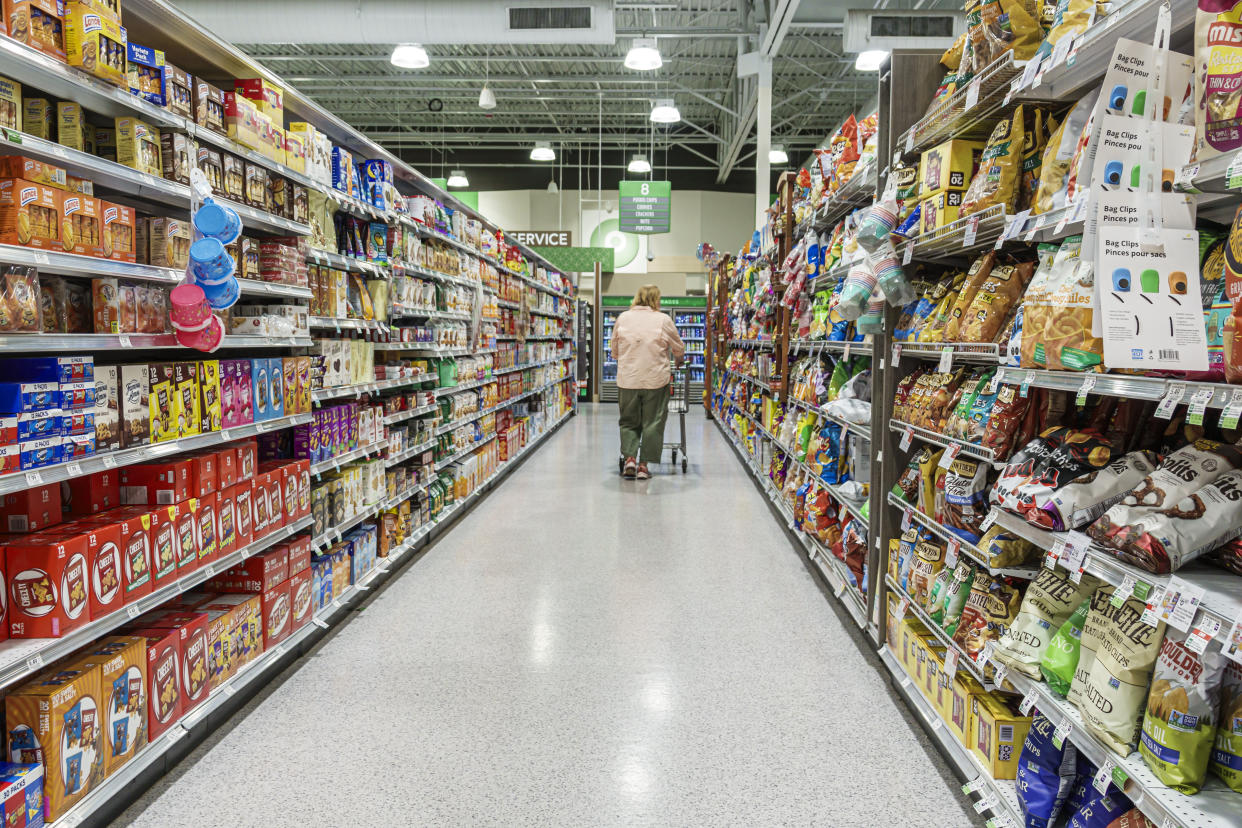Inflation: Grocery prices are plateauing, while the cost to dine out is rising at a lower rate
It was a quiet month for food inflation, as overall prices remained flat compared to last month.
The cost of groceries saw another month of deceleration, with a 1.0% increase compared to last year. Prices were unchanged compared to the prior month, according to the latest inflation data from the Bureau of Labor Statistics.
But the cost of dining out continues to outpace the cost of groceries. Meals at restaurants and bars cost diners 4.5% more compared to a year ago — the smallest 12-month change since June 2021, per BLS economist Steve Reed. Dining out costs jumped 0.1% compared to January.
Restaurants have been increasing prices due to persistent labor inflation, while resilient consumer spending also gives the businesses pricing power, Wells Fargo agricultural economist Michael Swanson told Yahoo Finance.
"The reason why [restaurants are] raising prices is because people are still coming out in very, very large numbers to eat at restaurants; there's no reason for them to drop prices or to hold prices flat if every table's full," he said.
Read more: Inflation update on everyday expenses: Travel costs tick down, over-the-counter meds shoot up
Some grocery items are dropping in price compared to January, including pork chops (down 3.4%), frankfurters (-3.8%), fresh whole chicken (-2.9%), frozen fish and seafood (-2.6%), and fresh fruits (-1.6%)
"Fruits and vegetables ... [saw] the largest decline since April of 2023" due to improvements in the supply chain, said Reed.
But costs for some categories have remained stubbornly high. Egg prices are down 17% year over year, but up 5.8% compared to the month prior. "The price of eggs today are double what they were five years ago," per Swanson.
In February 2024, a dozen large Grade A eggs cost $3.00, while the same carton cost $1.56 in February 2019.
Frozen non-carbonated juices and drinks were up 27.2%, the largest yearly gain in any category across the BLS report.
That comes as sugar and sweets prices are also higher, up 0.9% compared to January and 4.9% compared to last year. While not covered directly in the report, cocoa prices have also been rising due to the result of a climate pattern known as El Niño.

Lastly, the prices of snacks continue to increase, up 1.6% compared to a year ago.
Swanson said, unlike eggs, once packaged goods increase their prices, "they almost never come back."
Bank of America analyst Bryan Spillane echoed the sentiment with Yahoo Finance Live. Moderating inflation likely won't result in lower prices in grocery aisles, said Spillane. Rather, consumer staples companies will hold the higher prices and reinvest the profit behind their brands.
As these consumer packaged goods companies aim at regaining market share, there will be competition to find the right price and an uptick in promotions like buy one get one or coupons.
"Competition is always the cure for high prices with CPG companies," Spillane said.
—
Brooke DiPalma is a senior reporter for Yahoo Finance. Follow her on Twitter at @BrookeDiPalma or email her at bdipalma@yahoofinance.com.
Click here for the latest economic news and indicators to help inform your investing decisions.
Read the latest financial and business news from Yahoo Finance
